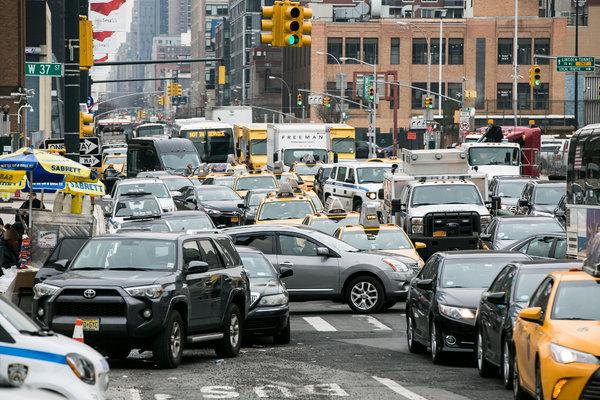
Summary & Quick Facts
- People overestimate their driving skills and underestimate the risk of being involved in accidents.
- There is no evidence that overconfidence decreases with experience.
- Drivers are more ready to dehumanize other drivers and pedestrians in ways they wouldn’t when interacting in person.
- Driving education should focus more on risk avoidance.
- Safety advertising campaign should put more emphasis on cautious driving.
Traffic Psychology and Driver Behaviors
When driving behind the wheel, we often have to think on our feet, or pedal for that matter. In the heat of the moment, we are often unaware that we’re constantly making snap decisions. Like in other situations in life, these decisions and assumptions are often rooted in implicit biases. Such biases undoubtedly have a huge impact on driver behaviors.
These biases are based on a number of things. This can include our past experiences or our perceptions of drivers around us. Moreover, we often fail to see how biases affect our own behavior. Afterall, instant biases seem to occur naturally and are seem well sewn into the fabric of our society. Nevertheless, numerous studies look at how the biases we have about ourselves and other drivers may not always be what they seem. By looking closely at characteristics such as age, location, and race, studies seek to find out how they may affect driver behaviors.
Many of the studies draw on a fascinating branch of science called traffic psychology. Traffic psychology studies the human and environmental factors that influence driver behaviors. Decades of research in traffic psychology suggests that poor driving is shaped by far more than carelessness or a subset of “problem drivers”. Here, even the most skilled drivers can experience a loss of social awareness, intuitive biases, contradictory beliefs, and limits in cognitive capacity. This has a dramatic effect on driver behaviors of course.
What Do the Studies Show About Driver Behaviors?
Studies show that more often than not, drivers have unrealistic optimism and overconfidence with their own potential and performance. This confidence has a dramatic effect on driver behavior. Moreover, it affects individual risk-taking and can prevent people from taking preventive measures.
Here, studies also show that drivers often overestimate their driving skills and underestimate the risk of getting into accidents. Perhaps shockingly, there is no evidence that overconfidence decreases with experience. Nonetheless, these biases have direct impacts and implications for driving education, for the framing of safety advertising campaigns and for the cost-benefit analysis of projects that affect risk. Let’s take a look at some of the biases drivers have a little more closely.
We Think We’re Better Drivers Then We Actually May Be
There is a lot of evidence out there that shows people have unrealistic optimism and overconfidence with their own driver performance. This affects driver behaviors and individual risk-taking, particularly in relation to life and health risks. It can also prevent people from taking preventive measures when it comes to driving. Why is this the case?
Once we’ve learned how to drive it soon becomes an automatic task. Over time we try to apply our skills by trying to predict the actions of other drivers. This, more often than not, can lead to the illusion that we are much better than them. This can, of course, be a fatal error on our parts.
One area where people seem especially prone to error is in the judgment of relative speed: we tend to overestimate how much time can be saved by driving faster while also underestimating minimal safe braking distance. The computations needed to make these judgments are highly complex and don’t come naturally to us.
Other Drivers Easily Make Us Angry
We’ve all been there, driving down the street and a car seemingly almost crashes into you. Many drivers know that near misses often lead to instant anger. In the most extreme and unfortunate cases, it may also lead to road rage. Would the same thing happen if someone accidentally bumped into us walking down the street? Here, we usually apologize and go about our ways without incident. Why the difference? Unfortunately, research shows that drivers more readily dehumanize other drivers and pedestrians in ways they wouldn’t when interacting in person. This loss of inhibition is similar to the way some of us behave in online environments and is related to the fact that we are more removed and isolated in our vehicles than in the outside environment.
We Are More Aggressive To ‘Lower Status’ Drivers
One interesting paradox is that even though we’re prone to dehumanizing other drivers, we still act according to social status. Decades of research shows that prolonged honking, tailgating, and other aggressive behaviors are more likely if the aggressor believes they are the more important driver. What’s particularly interesting is that these judgments can be based simply on the vehicles involved, with no knowledge of the person behind the wheel: larger cars generally outrank smaller cars and newer cars trump older ones. Drivers of more expensive cars are also more likely to behave aggressively toward pedestrians.
How Studies On Biases Can Help Improve Driver Behaviors
Driving is one of the most complicated behavioral tasks we can undertake. Although it seems so mundane, driving can reveal quite insightful things about ourselves and our society. Studies and collecting data on driver behaviors and biases can go a long way in helping governments craft better education programs that focus on risk avoidance, cautious driving and accident prevention. So next time you’re behind the wheel, think about the biases you may have that affect your behavior behind the wheel.
